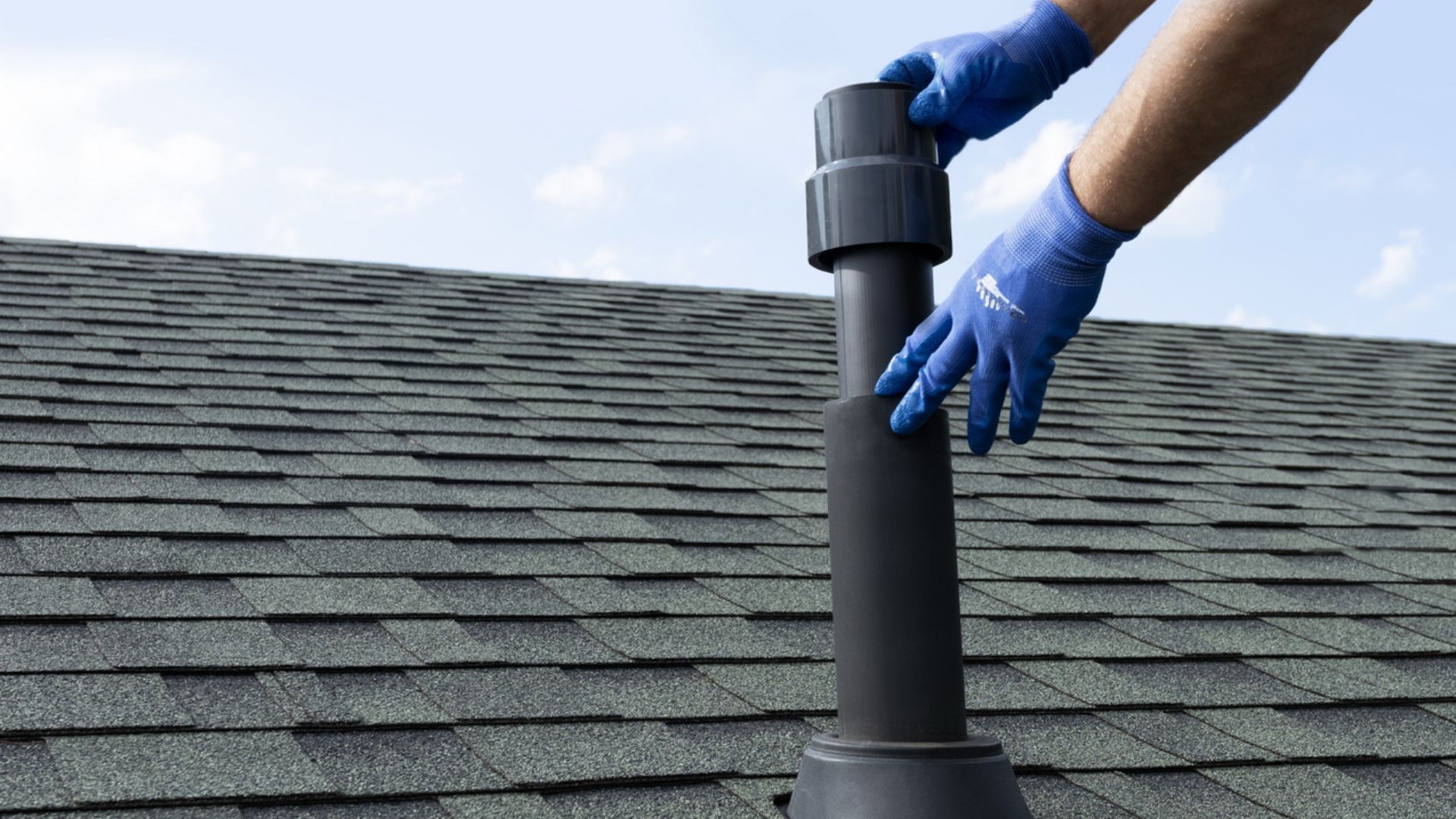The Role of Correct Ventilation in Ensuring Plumbing Systems
The Role of Correct Ventilation in Ensuring Plumbing Systems
Blog Article
The article further down involving What Is A Plumbing Vent & How Do They Work? is extremely stimulating. Check it out yourself and see what you think of it.

Proper air flow in plumbing systems is commonly neglected, yet it is crucial for preserving the capability and safety of your home's pipes. Air flow aids control atmospheric pressure, protect against the accumulation of unsafe gases, and guarantee the reliable removal of waste. In this overview, we will certainly discover the importance of correct plumbing air flow, exactly how it works, and the advantages it offers your plumbing system.
Just How Ventilation Works in Plumbing Solutions
Air Pressure Law
Appropriate ventilation preserves balanced air pressure within the plumbing system. When water moves through pipelines, it displaces air. Without ample ventilation, this displacement can produce negative pressure, resulting in reduce drains or siphoning of water from catches, which can trigger undesirable odors to seep into the home.
Protecting Against Sewage System Gas Accumulation
Among the most important features of plumbing vents is to stop sewage system gases, such as methane and hydrogen sulfide, from gathering within the home. These gases can present major health risks and are highly combustible. Vent pipelines permit these gases to run away safely outside.
Helping in Waste Elimination
Air flow assists in the efficient elimination of wastewater by protecting against airlocks in the drainage system. When air can stream freely via the vents, it allows water and waste to move smoothly through the pipelines, minimizing the danger of blockages and backups.
Benefits of Proper Air Flow
Boosted System Effectiveness
Appropriately aerated pipes systems operate much more successfully, with fewer clogs, faster draining, and much less strain on the pipes. This efficiency prolongs the life-span of the plumbing system.
Improved Air Quality
By stopping drain gases from entering your home, correct air flow contributes to far better interior air top quality, making your living atmosphere healthier and a lot more comfy.
Avoiding Water Damage
Adequate ventilation assists protect against water from being siphoned out of traps, which can bring about drain gases going into the home and triggering water damage with time.
Actions to Make Sure Appropriate Ventilation
Consulting Pipes Codes
Always seek advice from regional plumbing codes when making or changing your plumbing system. These codes supply the necessary guidelines for proper venting and ensure your system meets safety standards.
Regular Assessment and Upkeep
Normal examinations can assist recognize possible air flow problems before they end up being major problems. Upkeep jobs, such as cleaning air vent pipes and checking for blockages, are vital for keeping the system in good working order.
Expert Installation
For new installments or significant alterations, it's a good idea to employ an expert plumbing professional. They have the knowledge to guarantee the air flow system is properly created and set up according to code.
Understanding Air Flow in Pipes
Ventilation in plumbing describes the network of pipelines that enable air to flow with the drain system. These vents serve multiple objectives, including regulating atmospheric pressure within the pipes, protecting against sewage system gases from entering the home, and helping in the smooth circulation of wastewater.
Types of Pipes Vents
Key Heap Vent
The major stack vent, additionally called the vent stack, is the primary vent in a pipes system. It expands from the primary drain align through the roofing, permitting gases to run away and fresh air to get in the system.
Branch Vent
Branch vents attach to the primary pile air vent and offer specific fixtures, such as sinks, toilets, and showers. These vents ensure that each fixture has appropriate air flow to function appropriately.
Air Admittance Valve (AAV).
An Air Admittance Shutoff (AAV) is a one-way valve that allows air to get in the plumbing system without the need for a conventional air vent pipe expanding with the roofing. AAVs are generally used in restorations or locations where mounting a common air vent is not practical.
Signs of Poor Ventilation in Pipes.
Slow Draining Fixtures.
If your sinks, tubs, or bathrooms are draining slowly, maybe an indicator of inadequate air flow. Inadequate air flow can produce a vacuum effect, making it difficult for water to drain properly.
Gurgling Sounds.
Gurgling noises coming from drains pipes are frequently an outcome of air being drawn through water catches because of adverse pressure in the pipes. This is a clear indication of insufficient air flow.
Unpleasant Smells.
Drain smells inside your home are a warning that your pipes system is not appropriately aerated. This might suggest that sewage system gases are not being adequately aired vent outside, leading to possibly unsafe conditions.
Typical Ventilation Mistakes.
Poor Vent Sizing.
Making use of small vent pipes can bring about inadequate air flow and stress inequalities in the system. It's important to use vents that meet the details demands of your plumbing system.
Improper Vent Placement.
Placing vents as well much from the components they offer can minimize their efficiency. Correct positioning makes certain that air can move freely and successfully via the system.
Disregarding Code Requirements.
Building ordinance give particular guidelines for plumbing ventilation. Neglecting these codes can cause a system that fails to function correctly and might bring about expensive fixings or health hazards.
Conclusion.
Appropriate air flow is an essential component of any plumbing system, making sure that it operates effectively and safely. By recognizing the relevance of air flow, identifying the indications of bad ventilation, and taking actions to maintain your system, you can stop pricey problems and protect your home's air top quality.
4 Things You Should Know About Your Plumbing Vents
What Plumbing Vents Are
Also called a vent stack, a plumbing vent is a vertical pipe attached to your drain line that runs through your roof. The plumbing vent pipe, or plumbing air vent, removes gas and odors from your plumbing system and allows fresh air to enter the pipes, helping the water to flow out of the drain pipes.
What Plumbing Vents Do
Plumbing vents have two basic functions. One of which is to allow unpleasant smelling wastewater and sewer gasses to escape your plumbing system instead of entering your home. Plumbing vent pipes are typically located on roofs, away from windows, to ensure the fumes exit the home completely.
The other function of the plumbing vent is to move fresh air into your plumbing system. This helps move water through every plumbing fixture in your house, like toilets and sink drains. Think of the way in which you need to let a little air into the bottle as you pour soda in order to make the drink flow smoothly.
Different Types of Plumbing Vents
True vent: This is the most common vent option. In simplest terms, a true vent is a vertical pipe attached to your drain line that exits through the roof. They often function as the main vent that other fixtures can connect to. Re-vent pipe or auxiliary vent: Attached to the drain line near specific plumbing fixtures, re-vent pipes run up and over to connect to the main vent. Common vent: Two plumbing fixtures installed on opposite sides of a wall are typically tied into the vent stack using something known as a sanitary cross. Wet vent: This venting option operates as a drain pipe and a vent at the same time. Wet vent drainage systems drain water from one fixture while venting the air from another. Although they’ve been used for over 100 years, wet vent systems have only recently been added to the plumbing code in many areas. If you’re planning on installing one in a bathroom remodel, make sure you check your local code prior to construction. Loop vent: For free-standing fixtures like kitchen island sinks, loop vents are ideal. These vent pipes run under the floor, rise from the P-trap, and create a loop inside the cabinet sink. Air admittance valve: An AAV is a one-way mechanical valve typically installed at the site of the plumbing fixture. AAVs allow venting to occur without having to tie into a larger venting system. They’re ideal for venting fixtures where you aren’t able to easily connect to an existing vent system. Common Plumbing Vent Issues
Although vent pipes typically don’t have water flowing through them, they’re still subject to many typical plumbing issues. For example, clogs are one of the most common problems associated with sewer vent pipes. If your vent pipe gets clogged, all of your plumbing fixtures tied into the vent stack will be affected.
A sink with a slow drain that bubbles and gurgles or a strong sewage smell around your toilet are both indicators that your toilet vent pipe is clogged. Because most vent pipes exit through the roof, old leaves, twigs or even a bird’s nest could be clogging the pipe.
Clogs in your vent pipe system cause a buildup of negative pressure, meaning that water won’t be able to flow out of your home very well. It’s similar to putting your finger over the opening of a straw to trap water inside. When you remove your finger, the water is able to flow out of the straw.
If you suspect you have any blockage in your vent, make sure you have a professional come examine the situation. Left unchecked, a blocked air vent can lead to other costly repairs, like leaks and sediment buildup.
Under Pressure
Pipe vents are essential aspects of a home’s plumbing system. Owning a home means learning about all sorts of things you never put much thought into before. But by understanding as much as you can about the important systems of your home, you can keep those budgets intact and those anxiety levels low.
https://www.homeserve.com/en-us/blog/home-improvement/plumbing-vents/

I am just very intrigued by The Upsides of Proper Ventilation in Plumbing Design and I am assuming you enjoyed reading my blog post. In case you enjoyed reading our article plz don't forget to pass it around. We value reading our article about What Is a Plumbing Vent and Why Is It Important.
Click Here Report this page